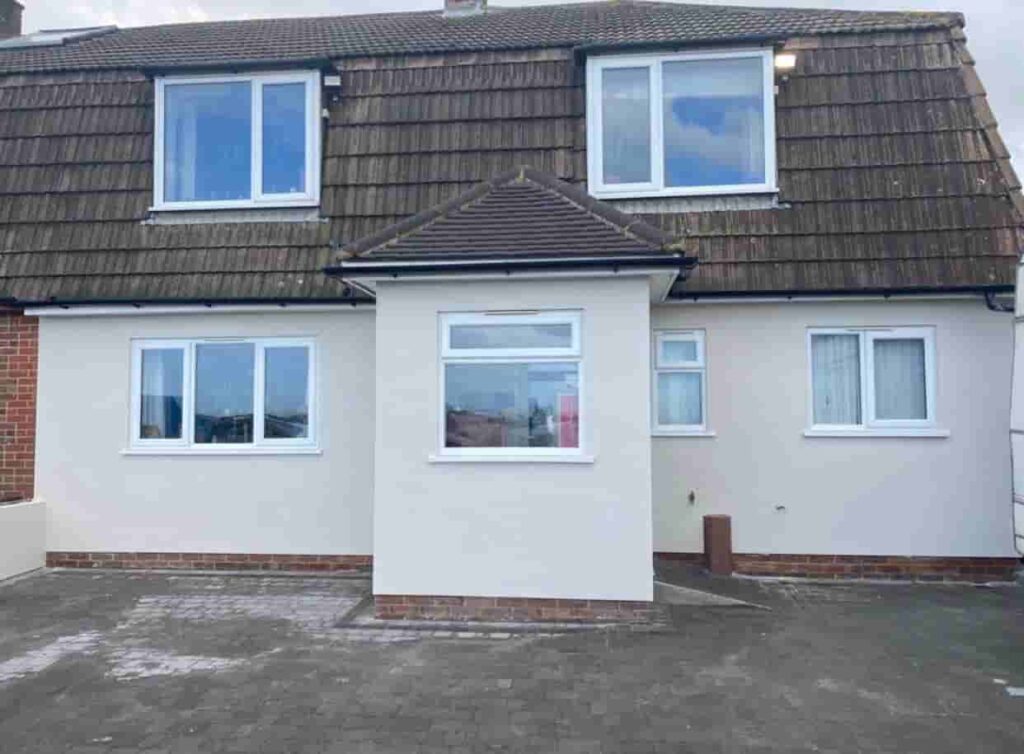Roof tiles are designed to protect your home from the elements, forming a watertight barrier that keeps rain, wind, and debris out. However, over time, exposure to weather and natural wear can cause individual tiles to shift or crack. Understanding the difference between a slipped tile and a broken tile is key to identifying early signs of roof damage and preventing larger, more costly issues later on.
At March Roofing Repairs, we regularly help homeowners in March, Cambridgeshire identify and repair roofing problems before they escalate. Knowing what to look for can make all the difference in maintaining the integrity and longevity of your roof.
What Is a Slipped Tile?
A slipped tile occurs when one or more roof tiles move out of place. This usually happens because the fixings that hold them in position — such as nails, clips, or mortar — have loosened or deteriorated. While the tile itself may still be intact, its displacement can create gaps that expose the underlay and timbers to moisture.
Common Causes of Slipped Tiles:
- Weather damage: Strong winds or heavy rainfall can loosen older fixings.
- Nail corrosion: Rusted or weakened nails lose their grip over time, especially on older roofs.
- Poor installation: If tiles were not properly aligned or secured during fitting, they may shift prematurely.
- Thermal expansion: Changes in temperature can cause roofing materials to expand and contract, slowly dislodging tiles.
- Roof movement: Minor structural settling or vibration can also cause displacement over time.
Though a slipped tile may seem minor, it can quickly lead to water ingress, damp insulation, or damaged rafters. Even a small gap can allow wind-driven rain to reach the roof’s underlayers, leading to internal leaks and costly repairs if not addressed.
What Is a Broken Tile?
A broken tile, on the other hand, refers to one that has physically cracked, split, or shattered. This can happen due to impact, age, or severe weather. Broken tiles compromise the protective surface of the roof, allowing water to penetrate directly through the damaged area.
Typical Causes of Broken Roof Tiles:
- Impact damage: Falling branches, debris, or heavy foot traffic can fracture tiles.
- Frost and freeze cycles: Water trapped in small cracks expands as it freezes, eventually breaking the tile.
- Age and brittleness: Older clay or concrete tiles can become fragile over time.
- Storm conditions: Hail, high winds, or flying debris can strike and crack exposed tiles.
Unlike slipped tiles, which may still offer partial protection, a broken tile creates an immediate weak point. Even a single fractured tile can lead to significant roof leaks during periods of heavy rain.
Key Differences Between Slipped and Broken Tiles
Although both issues affect your roof’s performance, they differ in how they occur and the type of damage they cause.
1. Structural Impact
- A slipped tile usually indicates a problem with the fixing mechanism rather than the tile itself. The tile may still be reusable once repositioned correctly.
- A broken tile affects the tile’s integrity directly, making replacement necessary to restore full protection.
2. Water Entry Points
- Slipped tiles create gaps that allow water to run underneath, potentially damaging the roof membrane and internal layers.
- Broken tiles allow direct water penetration, often leading to damp patches or ceiling stains below.
3. Repair Approach
- Slipped tiles can often be refitted securely using new clips or nails.
- Broken tiles require full replacement to prevent future leakage and maintain uniform coverage.
Why Identifying the Difference Matters
Homeowners often mistake a slipped tile for a broken one, or vice versa, leading to unnecessary or incomplete repairs. Knowing the difference helps ensure the right solution is applied quickly.
For example, if a slipped tile is simply refitted without checking for corroded fixings, it may slide again during the next storm. Similarly, sealing a cracked tile with adhesive rather than replacing it only provides a temporary fix — water will still find its way through.
At March Roofing Repairs, we always carry out thorough inspections to determine the true cause of the problem, ensuring lasting repairs that protect your home from further damage.
The Hidden Risks of Leaving Tiles Unrepaired
Both slipped and broken tiles pose serious risks if ignored. Even one displaced or cracked tile can compromise the entire roof system.
Potential Problems Include:
- Water leaks leading to ceiling stains or mould growth.
- Damp insulation reducing energy efficiency.
- Timber decay caused by prolonged moisture exposure.
- Frost damage spreading to adjacent tiles.
- Pest intrusion through roof gaps.
These issues tend to worsen over time, which is why prompt professional attention is always recommended.
How March Roofing Repairs Handles Tile Repairs
Our experienced team at March Roofing Repairs provides reliable roof tile inspection, repair, and replacement services across March, Cambridgeshire. We identify the exact cause of each issue, whether it’s due to weathering, wear, or structural movement.
Our Repair Process Includes:
- Visual inspection: Locating slipped, missing, or cracked tiles.
- Fixing assessment: Checking for corroded nails, loose mortar, or degraded clips.
- Replacement or refit: Replacing broken tiles and securing slipped ones with modern fixings.
- Weatherproofing: Ensuring the repaired area is watertight and seamlessly integrated with surrounding tiles.
Every repair is carried out with care and precision to restore both function and appearance, ensuring your roof continues to perform at its best.
Preventing Future Tile Problems
Prevention is always better than cure when it comes to roofing. Regular maintenance and early inspections can help you avoid unexpected damage.
Maintenance Tips for Homeowners:
- Have your roof inspected at least once a year, especially after storms.
- Keep gutters and valleys clear of debris to prevent water build-up.
- Avoid walking on roof tiles unnecessarily to reduce the risk of cracking.
- Trim overhanging branches that may cause impact damage.
Routine maintenance ensures small issues, like a single slipped tile, don’t develop into major repairs later.
Conclusion
Understanding the difference between a slipped tile and a broken tile can help homeowners take timely action to protect their property. While slipped tiles often indicate loose fixings or movement, broken tiles are a clear sign of impact or wear that requires immediate replacement.
At March Roofing Repairs, we provide expert roof inspections and tile repairs throughout March, Cambridgeshire, ensuring every roof remains secure, watertight, and built to last. Whether your roof needs a few tiles refitted or full replacements, our professional team is ready to restore your roof to excellent condition with care and precision.
Call us on: 01354 707 496
Click here to find out more about March Roofing Repairs
Click here to complete our contact form and see how we can help with your roofing needs.

